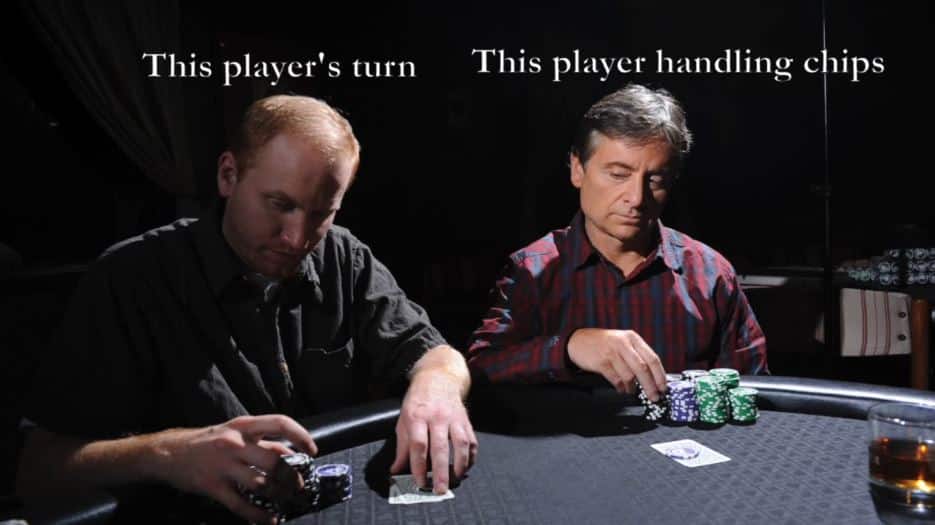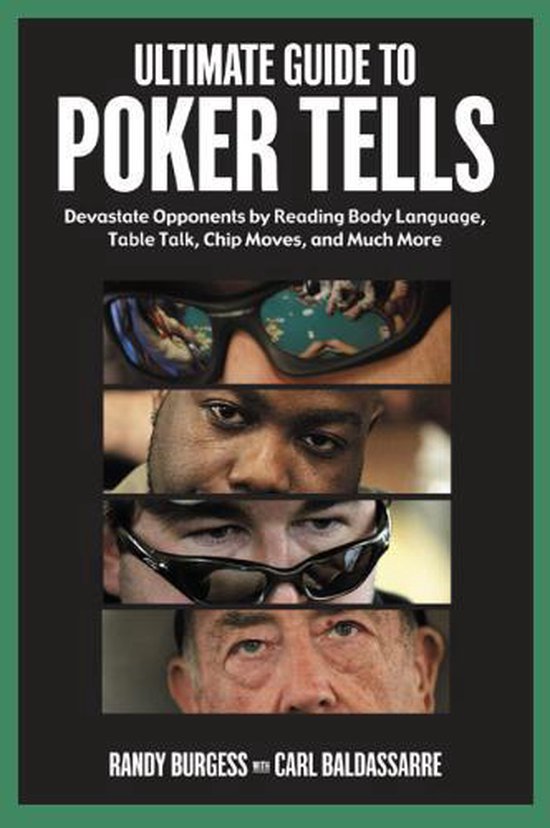Often when a new player starts to learn about this fascinating game that is poker, they become bogged down in the technical and strategic parts. And this is needed, of course.
Sitting with the body hunched forward, on the other hand, can imply that the person is bored or indifferent. When you are trying to read body language, try to notice some of the signals that a person's posture can send. Open posture involves keeping the trunk of the body open and exposed. This type of posture indicates friendliness, openness. Plus, the lighting in a poker room is often dim and the sunglasses will hinder the reading of other people’s body-language because they cannot see as clearly. A good book for understanding body-language with regards to Poker is Mike Caros’ “The Book of Poker Tells”; it has a lot to teach and has a sound knowledge base.
You need to understand the game inside out if you hope to become a great player. But one of the most overlooked parts of the game (and quite frankly hardest to learn) is the psychological aspects.
Live poker tells such as reading people’s reactions, body language, and subconscious signals can give you the edge against many opponents. And equally, knowing how to manipulate these psychological tendencies can help you throw your opponents off if you feel yourself playing in a predictable manner.


With all this in mind, I’ve decided to write down a few tips to help you learn the psychological side of the game, more specifically, what common poker tells are telling you.
Some of this may seem basic, some may seem extraordinary, but all of it will help your game.
Guide: Poker Tells to make the most when playing Poker

Contents

- The first obvious poker tell is someone staring down the other players. Why is this a tell? Well, if he or she is staring you down, they are most likely trying to show strength. But if the hand really was strong, most people wouldn’t make it so obvious. The player may have something, but you will probably be able to beat it. Obviously this isn’t an exact science – experience is needed.
- The next tell is jittering and fidgeting, which sometimes isn’t so obvious. This poker tell is usually not an act. It’s usually a sign of impatience. So what does this mean? It probably means the player betting has a weak hand or is bluffing, and therefore, does not want the call. If a player has a big hand he will usually stay relaxed when pending a call. Here’s a really important tip: If you’re not sure about calling or folding, reach towards the chips to see what his reaction is. If he stops fidgeting (this includes things like drumming the fingers, as well) then you should call. If the action doesn’t stop, you should fold, as he probably has a strong hand.
- The next tell I will talk about is shaking hands. Firstly, this tell is hardly ever an act. Why? Because most players won’t try to “act” nervous, and genuine hand shaking isn’t an easy thing to fake. So what does this tell mean? Well usually, hand shaking happens in connection with your opponent having a very strong hand. The reason his hands shake is that it’s a subconscious release of tension due to the suspense of what’s about to happen next. Depending on the circumstances, some players are nearly always nervous, however. So don’t mistake the two types of hand shaking. If your opponent hasn’t been shaking, and then all of a sudden he is, then you can be fairly confident that he or she has a very strong hand. Similarly, you want to observe if there is shaking legs. Although not talked about nearly as much, when a player’s legs are shaking, it’s no different to the body as a whole. They tense up when they’re not comfortable but if they’re moving or shaking then the player is more excited and probably feeling good about his hand.
- Another common tell is changes in breathing. This is rarely an act either. If you can tell your opponent has changed his breathing (either by hearing, or seeing his diaphragm move faster) then you will be able to read this tell. What does it mean? If your opponent is breathing faster, he may have become slightly more excited due to having a strong hand. If a player is bluffing he may try to hide the change of breathing by consciously breathing slower, or even holding their breath.
2 Videos here explains bit more about Tells:

1)
2)
A big part of poker tells is gathering information to know the strength of your opponent’s hand. If a poker tell suggests they’re strong or weak, it allows you to play perfect poker against them, assuming your reads are correct. If you expect them to have a strong hand you’d never consider bluffing them or bluff catching, and on the flip side, if you think the player has a weak hand, you’d be more inclined to bluff them or call their bluffs.
Reading Body Language Poker
When you are controlling the betting in a hand, it’s hugely advantageous to identify the strength of your opponent’s hands when they call, especially on draw heavy boards with many potential draws. The first common tells players give when they have a drawing hand, is when they may be checking hole cards after a flop. When the flop is showing signs of giving one of the players a flush or straight draw, keep an eye out for people who are re-check their hole cards. They are most likely checking to see if they have a piece of it. Your opponent probably doesn’t have the flush or straight just yet. How do I know this? Well, most players wouldn’t need to check if they had it already. They are checking to see if they can draw it.
Other Poker Tells:
Reading Body Language Powerpoint
The other drawing poker tell is when a player is taking a while before calling his bet. If he seems to be doing some sort of calculation, he probably is. What’s he doing? He’s probably trying to work out the pot odds to see if it’s worth it to risk getting the cards he needs to complete the drawing hand.
I know this stuff is fairly basic for most people, and when you’re judging these tells, be aware of the skill level of the players you’re up against. If they are beginners then you can feel free to make decisions based on these sort of tells, because they’re too inexperienced to try being deceptive. But if the players you’re up against have some experience, be very wary, since accomplished players will often give you false tells like this, to throw you off completely.
As always, you need to use your own experience to guide you, and judge wisely.